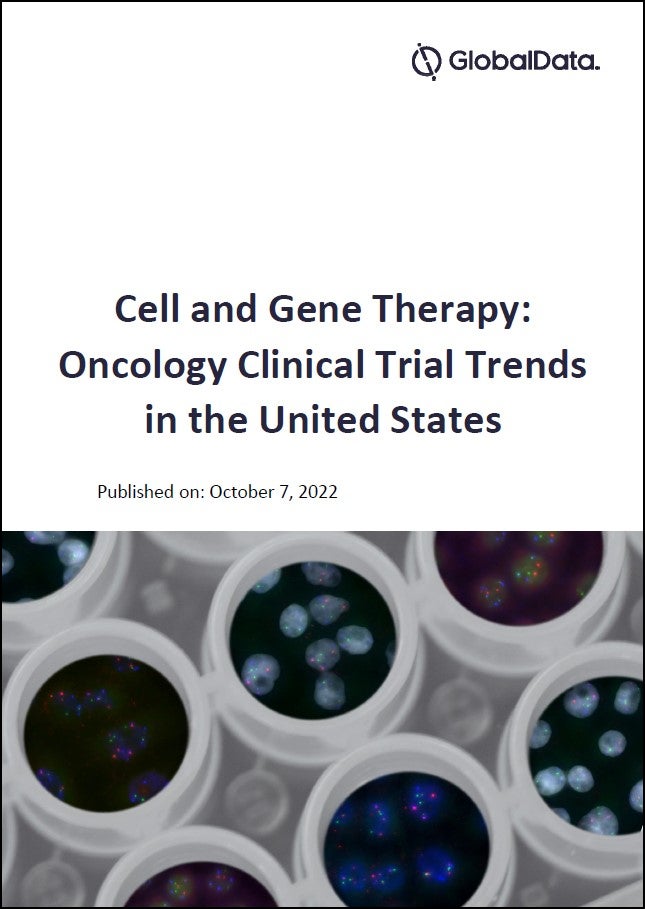The purpose of trial monitoring is to ensure the rights and wellbeing of human subjects are protected, and the reported trial data are accurate, complete and verifiable from all source documents. To achieve this purpose, the monitor has nearly 20 tasks (as defined by ICH E6 GCP1), including but not limited to source data verification (SDV). For decades, 100 percent SDV was deemed by pharma as the most effective procedure for achieving high quality data, despite the fact this practice was neither requested by the regulators (and/or applicable guidelines) nor proving effective.
This meant an equal focus on critical and non-critical data, with less time to carry out the rest of the monitoring responsibilities, such as regulatory compliance, which impact patient safety, study quality and data integrity. This is particularly the case in complex, data-rich, and long oncology trials with extensive medical records requiring expertise. A substantial body of evidence2-5 has, in recent years, demonstrated that traditional 100 percent SDV doesn’t necessarily achieve a commensurate 100 percent data accuracy and may take the focus from what really matters in regard to the conduct of a clinical trial.
How well do you really know your competitors?
Access the most comprehensive Company Profiles on the market, powered by GlobalData. Save hours of research. Gain competitive edge.

Thank you!
Your download email will arrive shortly
Not ready to buy yet? Download a free sample
We are confident about the unique quality of our Company Profiles. However, we want you to make the most beneficial decision for your business, so we offer a free sample that you can download by submitting the below form
By GlobalDataReal life examples include a routine investigational site audit which revealed zero SDV errors with zero adverse events (AEs). However, the monitor had not noticed this even though, globally, all sites reported many AEs and serious AEs. Another example from a different audit where 100 percent SDV was conducted and the source data were consistent with data entered into the electronic data capture (EDC), but the measurements of MRI tumor lesions were consistently incorrect.
Risk-Based Monitoring – What’s in the name?
Risk-based monitoring (RBM) can be defined as “a risk-based, methodical, individualized clinical trials monitoring system that is dynamic and adaptive. It’s centered on a risk-based algorithmic monitoring plan that focuses on preventing or mitigating important and likely sources of error relating to trial-specific processes and data essential for subject protection and overall study quality. The monitoring plan should be regularly and dynamically reviewed against clearly defined thresholds to adapt the monitoring. RBM should allow the establishment of intelligence trends to enable real-time decision-making.”
The approach is adaptive in that each clinical trial requires its own individualized monitoring plan to ensure that identified risks are minimized and sponsor responsibilities are fulfilled. The RBM concept is founded on the cognizance that each trial is different with its particular complexity, therapeutic criticality, end points’ data, the conduct and processes at each site, and compliance. In summary, RBM is the intelligent use of resource to manage a study without additional risk to quality or overall outcome, and is best regarded as Adaptive Intelligent Monitoring.
Is the concept totally new in clinical development? No, conducting any GxP-regulated quality control (e.g. monitoring), or quality assurance (e.g. auditing) process in a risk-based manner has been known for decades. For example, GCP auditing has always been conducted using a risk-based approach to enable an investigational site auditor to conclude at the end of typically a two to three day audit, the compliance and data integrity of a trial that could have been going on for years.
The FDA, the EMA and more recently ICH E6 R2 GCP provided their input on RBM through their respective guidelines6, 7 & 1. Both the FDA and the EMA have each developed guidance documents taking into account the activities of other groups in this field (e.g. ADAMON8, ECRIN9, MRC/DH/MHRA joint project10, the OECD11, the Clinical Trial Transformation Initiative (CTTI)12, the principles of ICH Q813, and ICH Q914).
Why RBM in Oncology?
- The increasing complexity of clinical trials has been one of the major grounds for the RBM case. Oncology trial design is more complex than many other therapeutic areas since invariably all such trials start with patients with no precedence in healthy volunteers.
- Some oncology trials are designated with Accelerated Approval and Priority Review, or similar review procedures, which means that accuracy of critical data must be ensured within much less time than non-expedited/fast-track trials. Furthermore, in such cases, ongoing operational data surveillance, upfront risk-mitigation and targeted data cleaning, which are facilitated by RBM, are key elements in expediting, what hopefully is a promising oncology product.
- The morbidity and mortality of patients in oncology trials and the likelihood of adverse events is invariably high adding complexity to monitoring.
- Only oncology patients on standard-of-care treatments may participate, which mostly means that these patients’ cancers were refractory to the standard-of-care-treatment, and such patients’ medical history, source data, etc. are typically substantially large.
- Oncology trials are taking longer (up to 16 months longer, on average) which indicates an increasing volume of medical records to monitor.
- Typically, monitors selected for oncology trials are usually experienced monitors as the expectation is that a more lateral thinking approach is needed in managing such trials and respective investigational sites. Introducing RBM to these trials frees these monitors from unjustifiably time-consuming non-critical data and processes verification to being more attentive to issues concerning critical safety and data integrity. Furthermore, RBM allows the monitor to organize the meeting with site staff in a more focused, agenda-driven manner to discuss essential matters, raising the monitor’s professional profile as evidenced by the overwhelming feedback from sites.
- There have been studies looking at the use of RBM specifically in oncology. One such study was conducted by Cancer Research UK (the world’s leading oncology research organization) in 201215, to assess the value of SDV for oncology clinical trials. The study clearly showed the desired data quality benefits, as well as a 55 percent increase in CRA productivity during monitoring visits. Their study also confirmed that RBM improves site performance and investigator satisfaction.
- In all studies that utilized RBM, enhanced study performance and less “fire-fighting” were demonstrated.
- With distinct competition for oncology investigational sites, RBM enables a much more informed, data-based site selection, and hence better data from fewer sites avoiding non-productive sites.
Establishing an RBM System
To establish an RBM system, we need to have the following adaptive and dynamic processes:
- Risk assessment
- Data surveillance
- Dynamic monitoring
Risk Assessment
Identify and evaluate risks to critical study data and processes. Examples of critical data include, but are not limited to:
- Eligibility criteria (e.g. prior oncology therapy as this may affect the efficacy of the IMP and/or for safety reasons, history of other active cancer as this may affect study objectives, etc.)
- Consent process and respective records
- Safety (e.g. specific AEs (and/or their grade) of interest, etc.)
- Primary End Points (e.g. Dose-Limiting Toxicities, etc.)
- Randomization/Blinding process
Data Surveillance
Optimized and adapted monitoring of clinical data during the trial, reassessing risks and sampling utilizing data-driven actions at the appropriate time to mitigate risks while improving patient safety and study quality.
Dynamic Monitoring
Planned, implemented and regularly evaluated monitoring designed to address important and likely risks identified during risk assessment and adjusted over time should the risks change.
Risk-Based Monitoring in Oncology: Lessons Learnt
- With oncology trials being mostly complex, phase I being typically First-In-Patient with no precedence in healthy volunteers, having a single approach to monitoring is inappropriate for every oncology clinical trial
- Ensure appropriate site selection, prioritizing highly trained and motivated sites
- Focus on collecting the data that you actually need
- Regularly review the risk assessment with clearly defined thresholds to adapt monitoring accordingly
- Avoid complicating your RBM system
- Good management and follow-up of high risk safety issues, data outliers and major deviations
- Incorporate centralized medical data monitoring and review that allows for:
1) Site-to-site comparisons
2) Identification of percentage of deviation from study normal ranges
3) Detection of outlying/non-feasible data
4) Ongoing safety monitoring
5) Patient profiling review
6) Intelligent statistical monitoring
- Enhance data management plans ensuring they incorporate appropriate fit for purpose checks in a reduced SDV model.
- Review triggers for signal detection of possible site issues and data entry delays, while managing triggers and escalation pathways to adjust SDV and site visit frequency for challenging sites as needed. Processes and Tools can support “Common Sense”….but not replace it.
- Use remote monitoring to stay in contact with sites in between on-site visits
Amer Alghabban, M.Sc. Pharmacol. Post. Grad. Cert. Clin. Res., Dipl. Bio. Sci., B.Sc., IRCA ISO Certified
References
1) ICH E6 R2 Good Clinical Practice (GCP), Nov 2016.
2) Vadim Tantsyura, Imogene McCanless Dunn, Kaye Fendt, et. al. Therapeutic Innovation & Regulatory Science, May 28, 2015
3) Bakobaki, Julie M.; Rauchenberger, Mary; Joffe, Nicola; McCormack, Sheena; Stenning, Sally; Meredith, Sarah (2012): The potential for central monitoring techniques to replace on-site monitoring: findings from an international multi-centre clinical trial. In: Clinical trials (London, England) 9 (2), S. 257–264. DOI: 10.1177/1740774511427325.
4) Smith CT, Stocken DD, Dunn J, et al. The value of source data verification in a cancer clinical trial. PLoS ONE. 2012;7(12): e51623.
5) TransCelerate, Position Paper: Risk-Based Monitoring Methodology (2013), https://www.prnewswire.com/news-releases/transcelerate-biopharma-inc-reveals-collaborative-methodology-for-risk-based-monitoring-of-clinical-trials-209910821.html
6) Food and Drug Administration. Guidance for industry: oversight of clinical investigations – a risk-based approach to monitoring. http://www.fda.gov/downloads/Drugs/…/Guidances/UCM269919.pdf. Published August 2013. Accessed on July 31, 2017.
7) European Medicines Agency. Reflection paper on risk based quality management in clinical trials. 8 November 2013 EMA/269011/2013. http://www.ema.europa.eu/docs/en_GB/document_library/Scientific_guideline/2013/11/WC500155491.pdf. Published November 2013. Accessed July 31, 2017.
8) O. Brosteanu, P. Houben, K. Ihrig, C. Ohmann, U. Paulus, B.Pfistner, G. Schwarz, A. Strenge-Hesse and U. Zettelmeyer; Risk analysis and risk adapted on-site monitoring in non-commercial clinical trials.Clinical Trials 2009; 6: 585–596.
9) ECRIN Risk-Adapted Monitoring in Clinical Trials.
10) MRC/DH/MHRA joint project; Risk-adapted Approaches to the Management of Clinical Trials of Investigational Medicinal Products.
11) OECD Recommendation on the Governance of Clinical Trials.
12) Clinical Trials Transformation Initiative (CTTI). Initiatives on developing effective quality systems in clinical trials: Effective and Efficient Monitoring as a Component of Quality in the Conduct of Clinical Trials. August 2011.
13) ICH Q8 Pharmaceutical Development.
14) ICH Q9 Quality Risk Management.
15) Sherraine Hurd. Risking It All? Introducing Risk-Based Monitoring at Cancer Research UK. Nov 24, 2014








